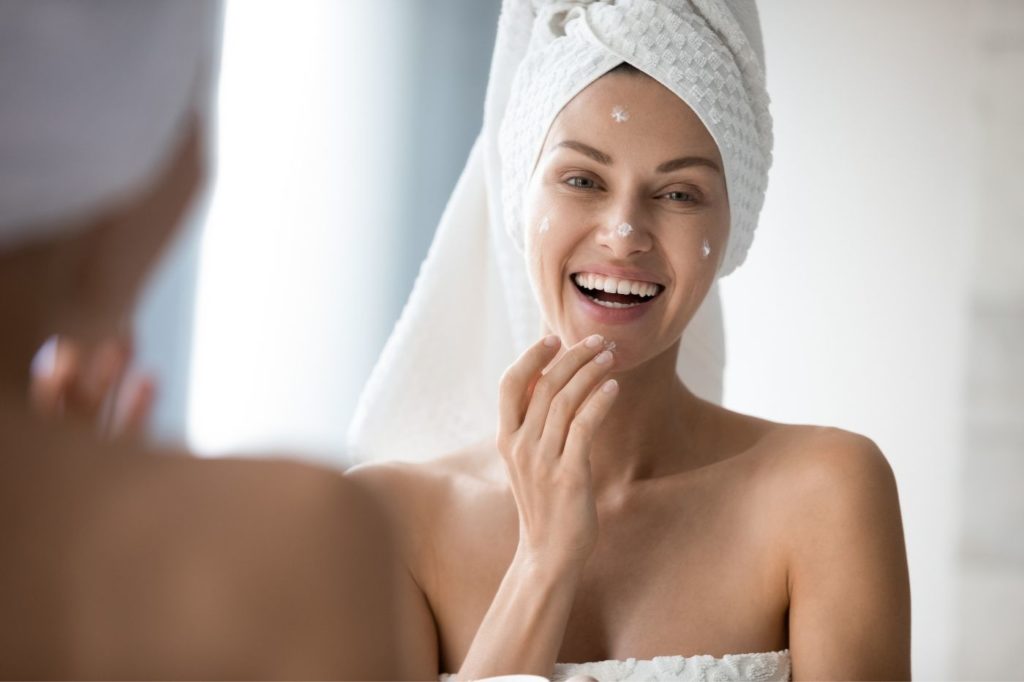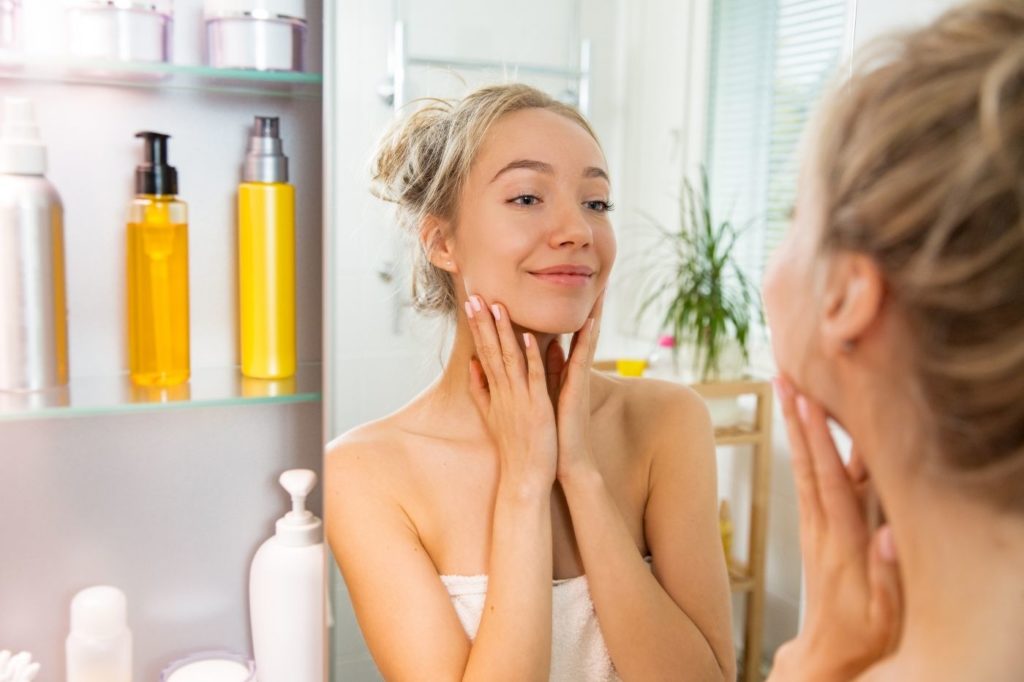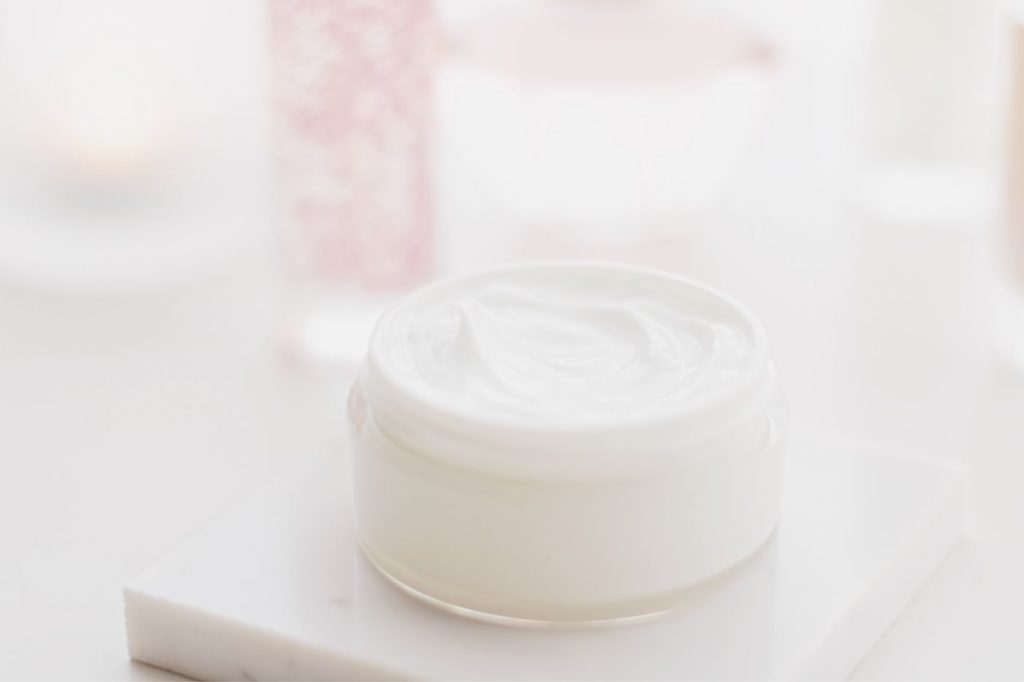
Is a skin detox right for you? Beauty culture encourages detoxes for everything from your face to your armpits. Some of these techniques are very useful, but some are not.
Your skin is the largest organ of your body. Keeping it clear of toxins and impurities is a great way to support clear skin.
There are many misconceptions about what detoxing your skin can actually do. However, if you do it right, you may find you have fewer breakouts and blemishes.
In fact, if you have hormonal acne, regular skin detoxing can be a great way to address what your skin needs to have fewer breakouts!
Let’s take a look at the truth about detoxing your skin and the best ways to do it.
What a skin detox is… and what it’s not.
A skin detox is a skincare routine and a nutritional plan designed to support your skin’s natural ability to eliminate toxic chemicals.
Like other detoxification plans, skin detoxing is controversial. The science behind true detoxification (drawing out chemicals) is limited and inconsistent, though bentonite clay and activated charcoal may be able to truly draw out some skin impurities.
In other words, you shouldn’t expect a skin detox to draw out pounds of carcinogens and hormone-disrupting chemicals from your face.
But you can expect a good skin detox to:
- Support your liver, kidneys, colon, lungs, and skin’s natural ability to neutralize and eliminate toxins
- Clear a buildup of dead skin cells to make your skin care products more effective
- Make sunscreen more effective to protect against free radicals that can cause premature aging
- Promote collagen and elastin development to guard against wrinkles and blemishes
How do you detox your skin? To detox your skin, you can use topical agents to clear buildup and moisturize, and alter your diet to support healthier skin.
How long does it take my skin to detox? With a proper skin detox routine — and reasonable expectations — you can expect it to take about 4-6 weeks to see improvements in your skin.

1. Skincare Routine
First, rethink your cleansers and other facial products. Here’s my advice for the perfect skincare routine:
- Consistently use a water-based cleanser every morning and night (you may even use micellar water)
- Wear a daytime moisturizer with at least SPF 30
- Use a gentle oil-based cleanser to remove makeup before using your water-based cleanser at night
- After cleansing, use a toner such as witch hazel
- Utilize any nighttime acne spot treatments after using toner
- Use overnight moisturizer
- Avoid exfoliating with gritty physical exfoliants (salt, sugar, etc.), especially if you have sensitive or acne-prone skin
2. Bentonite Clay Mask
Bentonite clay is an adsorbent, which means it can bond with certain substances in the body and help the body expel them. The negative charge of bentonite clay is what allows it to adsorb heavy metals, even through skin.
Bentonite clay:
- Binds to excess oil (sebum), dirt, and other pore-clogging compounds to balance oily skin
- Reduces allergic reactions and inflammation of the skin
- Fights antibiotic-resistant acne-causing bacteria
- Treats poison ivy
I recommend making your bentonite clay mask with apple cider vinegar and tea tree oil for the most potent acne-fighting benefits!
3. Activated Charcoal Mask
Activated charcoal may help to adsorb pore-clogging compounds, like sebum or dirt, from pores. It’s inert, which means it won’t cause irritation or allergic reactions.
For the best results, combined activated charcoal with bentonite clay. These face masks can help to make spot treatments more effective, as your pores will be clear.
4. Vitamin C Serum
Yes, vitamin C is a great hydrating product for skin. But vitamin C serum also detoxifies the face by providing antioxidants directly to the skin.
The antioxidants in vitamin C:
- Hydrate
- Scavenge free radicals to protect you from UVA and UVB damage
- Promote collagen production
- Brighten skin to eliminate dullness
- Reduce inflammation
5. Algae
Similar to vitamin C, algae boasts significant detoxifying skin benefits because of its high antioxidant content.
Preliminary research shows that algae may aid skin health by:
- Preventing free radical damage from UVA and UVA rays
- Hydrating skin
- Strengthening skin cell membranes
- Providing amino acids and healthy fats (omega-3s)
6. Hydration
Drinking water may help to deeply hydrate your skin from the inside out. If you’re not drinking plenty of water on a daily basis, overweight, or over the age of 65, you’re likely to see the most significant results from upping your water intake.
You should drink about half your pounds of body weight in ounces of water every single day. So, if you weigh 180 pounds, you should drink at least 90 ounces of water daily.
It’s also a good idea to reduce or eliminate dehydrating beverages like alcohol, coffee, and sugary drinks.
What can I drink to detox my skin? You should drink water to detox your skin. I recommend adding a bit of lemon, lime, or other citrus juice to get an extra antioxidant boost!
7. Diet
If you want to truly detox your skin, it needs to begin with your diet. In fact, if you struggle with acne, resetting your diet is likely to be more effective in the long-term for controlling breakouts.
Here are my tips for a diet that will aid detoxification of your skin and the rest of your body:
- Eliminate refined sugars. These sugars provide no actual nutrition and cause a constant boost to your inflammation levels. As much as possible, eat only natural sugars and choose healthy sugar substitutes like monk fruit to add sweetness.
- Eat plenty of leafy greens and colorful vegetables. To get the best range of nutrients from your plant-based foods, eat the rainbow! Foods that nourish your body will nourish your skin.
- Reduce or eliminate foods that may cause acne. This includes gluten foods, dairy, caffeine, eggs, high GI foods (sugary/carb-heavy), highly processed foods, and foods fried in inflammatory oils. Consider working with a functional doctor, nutritionist, dietician, or health coach to do a true elimination diet to find the triggers of your personal issues.
- Avoid hormone-disrupting foods. Certain foods contain phytoestrogens, plant hormones that may throw your own hormone levels out of whack and lead to extra sebum production or more breakouts. In particular, avoid non-fermented soy products.
- Consume detoxifying foods and drinks. No, a juice cleanse is not the answer to all of your skin problems. However, parsley, cilantro, and even green tea contain compounds that aid your liver in getting rid of toxins and pollutants that can wreck your skin. EGCG from green tea, with resveratrol, can improve mitochondrial function and potentially slow the aging of skin.
- Get plenty of healthy fats. Fats are not the enemy — in fact, beneficial fats like omega-3s may support skin hydration, reduce inflammation, promote wound healing, and reduce your risk of skin cancer.
8. Dry Brushing
What is skin brushing for detox? Dry brushing for detox, or dry skin brushing, is the practice of using a specific type of brush to stimulate circulation and improve lymphatic health.
For the best results, dry brush before you shower in the morning. Brush in circles, always towards your heart.
9. See Your Dermatologist
Not seeing the results you want from your skin detox routine? It might be time to see a holistic dermatologist. A functional/holistic, board-certified dermatologist can help get to the root of problems you have that cause inflamed, acne-prone, or sensitive skin.
Avoid These Skin Detox Ideas
Some skin detox ideas just don’t work.
Don’t use these methods to detox your skin:
- Juice cleanses: There are benefits to certain short-term eating plans/cleanses, but detoxing your skin isn’t one of them.
- Exfoliating scrubs: Using scrubs and other granular products to exfoliate your skin won’t do much good. In fact, these exfoliants may actually cause more irritation.
- Supplements: I have a ton of favorite supplements that have major skin benefits. But none of them will cause your skin to start excreting toxins more effectively.
- Hot yoga: Hot yoga is great for your physical and mental health. However, no matter how much you sweat, most of your sweat is still made of water. Heavy sweating is not a skin detox secret.
Sources
- Klein, A. V., & Kiat, H. (2015). Detox diets for toxin elimination and weight management: a critical review of the evidence. Journal of human nutrition and dietetics, 28(6), 675-686. Abstract: https://pubmed.ncbi.nlm.nih.gov/25522674/
- Williams, L. B., & Haydel, S. E. (2010). Evaluation of the medicinal use of clay minerals as antibacterial agents. International geology review, 52(7-8), 745-770. Full text: https://www.ncbi.nlm.nih.gov/pmc/articles/PMC2904249/
- Moosavi, M. (2017). Bentonite Clay as a Natural Remedy: a brief review. Iranian journal of public health, 46(9), 1176. Full text: https://www.ncbi.nlm.nih.gov/pmc/articles/PMC5632318/
- Haydel, S. E., Remenih, C. M., & Williams, L. B. (2008). Broad-spectrum in vitro antibacterial activities of clay minerals against antibiotic-susceptible and antibiotic-resistant bacterial pathogens. Journal of Antimicrobial Chemotherapy, 61(2), 353-361. Full text: https://www.ncbi.nlm.nih.gov/pmc/articles/PMC2413170/
- Silberman, J., & Taylor, A. (2020). Activated Charcoal. In StatPearls [Internet]. StatPearls Publishing. Full text: https://www.ncbi.nlm.nih.gov/books/NBK482294/
- Farris, P. K. (2005). Topical vitamin C: a useful agent for treating photoaging and other dermatologic conditions. Dermatologic surgery, 31, 814-818. Abstract: https://pubmed.ncbi.nlm.nih.gov/16029672/
- Berthon, J. Y., Nachat-Kappes, R., Bey, M., Cadoret, J. P., Renimel, I., & Filaire, E. (2017). Marine algae as attractive source to skin care. Free Radical Research, 51(6), 555-567. Abstract: https://pubmed.ncbi.nlm.nih.gov/28770671/
- Palma, L., Marques, L. T., Bujan, J., & Rodrigues, L. M. (2015). Dietary water affects human skin hydration and biomechanics. Clinical, cosmetic and investigational dermatology, 8, 413. Full text: https://www.ncbi.nlm.nih.gov/pmc/articles/PMC4529263/
- Burris, J., Rietkerk, W., & Woolf, K. (2013). Acne: the role of medical nutrition therapy. Journal of the Academy of Nutrition and Dietetics, 113(3), 416-430. Abstract: https://pubmed.ncbi.nlm.nih.gov/23438493/
- Sears, M. E., & Genuis, S. J. (2012). Environmental determinants of chronic disease and medical approaches: recognition, avoidance, supportive therapy, and detoxification. Journal of environmental and public health, 2012. Full text: https://www.hindawi.com/journals/jeph/2012/356798/
- Most, J., Timmers, S., Warnke, I., Jocken, J. W., van Boekschoten, M., de Groot, P., … & Blaak, E. E. (2016). Combined epigallocatechin-3-gallate and resveratrol supplementation for 12 wk increases mitochondrial capacity and fat oxidation, but not insulin sensitivity, in obese humans: a randomized controlled trial. The American journal of clinical nutrition, 104(1), 215-227. Full text: https://academic.oup.com/ajcn/article/104/1/215/4569664
- McCusker, M. M., & Grant-Kels, J. M. (2010). Healing fats of the skin: the structural and immunologic roles of the ω-6 and ω-3 fatty acids. Clinics in Dermatology, 28(4), 440-451. Abstract: https://pubmed.ncbi.nlm.nih.gov/20620762/


